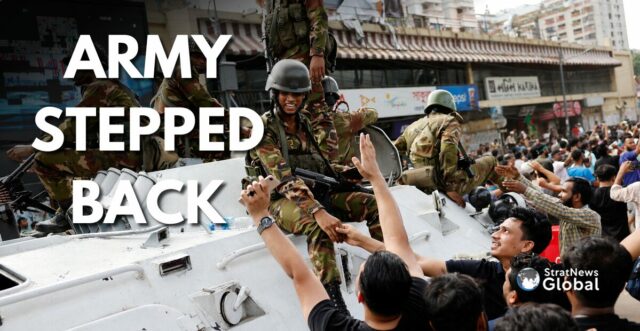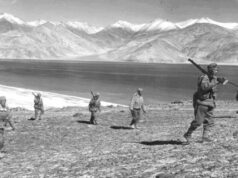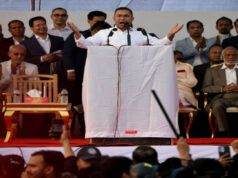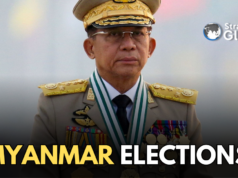The night before long-time leader Sheikh Hasina abruptly fled Bangladesh amid deadly protests, her army chief, General Waker-Uz-Zaman, held a crucial meeting with his generals. They decided that troops would not open fire on civilians to enforce a curfew, according to two serving army officers with knowledge of the discussions.
Army’s Decision And Hasina’s Resignation
General Zaman conveyed to Hasina that his soldiers would be unable to implement the lockdown she had called for. This message, relayed through an Indian official, indicated that Hasina no longer had the army’s support. These details have not been previously reported, shedding light on how Hasina’s 15-year rule came to a sudden end on Monday when she fled to India.
The nationwide curfew followed deadly clashes on Sunday that resulted in at least 91 deaths and hundreds of injuries, marking the most violent day since student-led protests against Hasina began in July.
The Army’s Stance
Army spokesman Lt. Col. Sami Ud Dowla Chowdhury confirmed the Sunday evening discussions, describing them as a routine meeting to review disturbances. However, he did not provide further details about the decision-making process. Attempts to reach Hasina and her son and advisor, Sajeeb Wazed, were unsuccessful.
Over the past week, Reuters spoke to ten sources, including four serving army officers, to piece together the final 48 hours of Hasina’s reign. Many spoke on condition of anonymity due to the sensitivity of the matter.
Hasina, who has ruled Bangladesh for 20 of the last 30 years, was elected to a fourth term in January after arresting thousands of opposition leaders and workers. Her election was boycotted by her main rivals.
Protests And Military Pressure
The protests against Hasina began after a court ruling to reserve government jobs for certain population segments, a decision that was later overturned. Despite the reversal, the demonstrations quickly evolved into a movement to oust Hasina. The scale of the protests and the death toll of at least 241 made it untenable for the army to support Hasina, according to three former senior Bangladesh army officers.
Retired Brig. Gen. M. Sakhawat Hossain noted the unease within the troops, which likely influenced General Zaman’s decision. Zaman, who is related to Hasina by marriage, had shown signs of wavering support on Saturday when he addressed hundreds of uniformed officers, calling for the protection of lives and urging patience.
Hasina’s Final Hours In Bangladesh
On Monday, the first day of the indefinite nationwide curfew, Hasina was in the Ganabhaban, her official residence in Dhaka. Outside, tens of thousands gathered, responding to protest leaders’ call for a march to oust her. With the situation spiralling out of control, Hasina decided to flee.
She and her sister, who was visiting from London, discussed the matter and left for India around lunchtime. Indian Foreign Minister Subrahmanyam Jaishankar later revealed that New Delhi had urged various political forces to resolve the situation through dialogue. However, as crowds ignored the curfew and gathered in Dhaka, Hasina requested temporary refuge in India.
Arrival In India
Late Monday afternoon, a Bangladesh Air Force C130 transport aircraft landed at Hindon air base outside Delhi with Hasina on board. She was met by Ajit Doval, India’s national security advisor.
Reactions And Future Prospects
While Hasina had long-standing ties with India, resentment still lingered among some in Bangladesh that she was allowed to leave. Retired Brig. Gen. Mohammad Shahedul Anam Khan expressed his disappointment, stating, “Personally, I feel that she should not have been given a safe passage.”
Nobel laureate Muhammad Yunus, whom protesting students want to lead the interim government, has called on India to reconsider its foreign policy, highlighting the complex dynamics between the two nations.
(With Inputs from Reuters)
Research Associate at StratNewsGlobal, A keen observer of #China and Foreign Affairs. Writer, Weibo Trends, Analyst.
Twitter: @resham_sng





